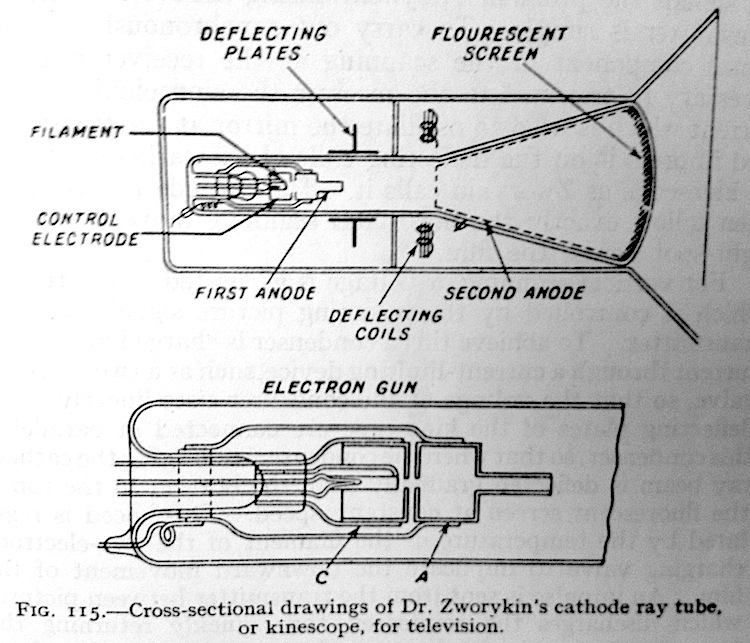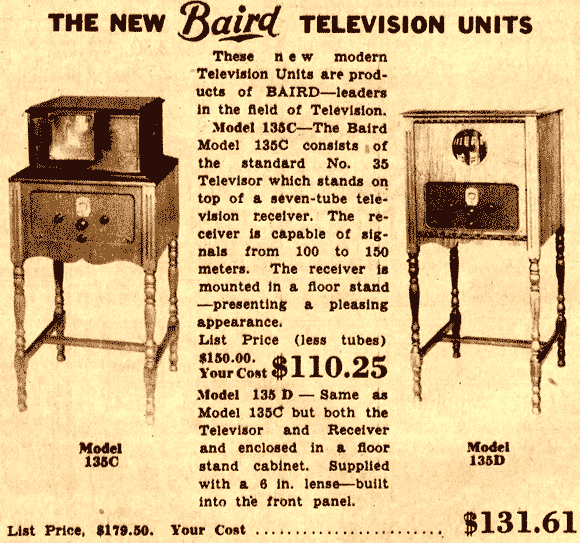Slow Television
This morning’s Famicom research focused on the video half of videogames. In other words, I was looking at the oft-neglected world of cathode ray tubes, aka the big fat TVs we used before flatscreens came along.
There’s a reason many vintage game enthusiasts keep stocky CRTs around–old games look better on them. And this isn’t mere nostalgic impulse. Early videogames were designed around two inefficiencies: our eyes and our televisions.
Like cinema and animation, television relies upon the persistence of vision. When images enter and exit our field of view, they don’t vanish immediately. There’s a ‘residue’ that persists, though only for about a tenth of a second. Stitch together a sequence of images fast enough and we perceive movement.
Cathode ray displays have a similar residue. The cathode at one end of the pressurized tube emits electrons when heated. A series of anodes attract, focus, and accelerate the electron stream into a concentrated beam. Magnet coils then deflect that beam according to a consistent set of voltages. The beam ‘paints’ across the larger end of the cathode tube, which is coated with a luminescent phosphor material. When the electrons strike the coating, the phosphors emit a photon. Voila! A single point of light on the screen. As the beam sweeps left to right it draws a scanline, drops down, resets to the left, then draws the next scanline. Once it reaches the bottom, it resets to the upper left and starts the process over again.

To hook into our persistence of vision, the beam draws this full frame sixty times per second. (Note that this number can vary, depending on region [NTSC, PAL, SECAM] and interlacing.) The cool thing is that phosphors don’t simply flip off and on instantaneously. Once the phosphor is excited, it requires a ‘cooldown’ period. In other words, it holds the image between frame redraws. This chemical process is a drawback for normal television broadcast. Phosphor afterimage can blur fast motion. But for low-resolution videogame consoles like the Famicom/NES, the drawback is a strength: it smoothes over the crisp blocky edges that define pixellated objects and creates pleasing color bleeds between adjacent pixels.
The point is, television is an amazing technology, a marvel of optics, chemistry, electricity, and mechanical know-how, all synchronized in a precise choreography of focused electrons. Television took decades to develop and perfect. We take for granted how complex and wonderful it is.
I picked up a great book at the library called First Principles of Television by Alfred Dinsdale. I initially thought it was written in 1971, but that was actually the reprint date. The first published date is 1932, many years before television was a household mainstay. In 1932, it was positively experimental.
Dinsdale has a fascinating perspective on the emerging medium. He covers optics, engineering, and chemistry with equal insight. He covers television research on a worldwide stage. He writes with vigor, grappling with television’s realities, implications, and possibilities. He exudes excitement over its potential, but he’s measured and practical.
In the final chapter, for instance, Dinsdale indulges in a bit of speculation. He first considers the potential for ‘television as a means of entertainment’:
Television in its present form, showing only a head and shoulders view of a single individual, and that imperfectly, has definitely no entertainment value to persons other than those who have some direct or indirect scientific interest in the subject. Once the novelty has worn off there is nothing in the present limited images which will interest, amuse, or instruct the average non-technical person. (231)
Dinsdale isn’t trying to undercut television’s potential—he’s just spent two hundred pages dissecting every contemporary effort to get television beyond the laboratory and into the home. Instead, he’s trying to elevate the new medium beyond novelty. At this point, cinema is already decades old and, as he says, has established ‘high standards of performance’ that television must match. If everyday people are expected to be interested in TV, it has to offer something at least equal in quality to cinema, including its field of view.

And what of radio, the mass media of Dinsdale’s day? He asks, ‘Does the public really want television as an adjunct to sound broadcasting? Does it really want this additional form of entertainment?’ Note the word ‘adjunct.’ Dinsdale considers television’s potential as a supplement to radio, a ‘value-add’ that will enhance the aural dimension. This precedence of sound over vision is certainly the inverse of how we relate to television today. He continues:
Broadcasting requires the attention of but one of our senses, that of hearing, and we can hear a lot of things (imperfectly, no doubt, but often sufficiently well for our purpose) whilst occupied with other matters. Add to the loud speaker a vision screen, and what happens? We are called upon to use the sense of sight in conjunction with that of hearing, and to do so calls for the suspension of all other activities while we concentrate on the screen and the loud speaker. It is not difficult to imagine that the television part of the programme would receive but scant attention over long periods. (233)
Dinsdale conjectures that our interest for the image will wane prior to the sound. It’s a fair point. Sound has the tendency to recede into the background. We put music on while we’re occupied with other projects—work, driving, studying—tuning in when something demands or invites our attention. Television halts other activities, occupying our ears and our eyes. But oh how wrong he was that we’d eventually tire of the image and move along to other activities. It’s the opposite–we’re absolutely enraptured by television.
My favorite bit comes at the very end, when Dinsdale speculates on the non-entertainment applications of television technology.
There is another potential field for television in connection with the world-wide dissemination of visual news, or the simultaneous publication at very remote points of a newspaper, each remote edition being an exact duplicate in every particular of the original or central edition. To achieve this it would be necessary to send facsimile copies of each page, en bloc, to the remote points. Phototelegraphy can go part way towards the accomplishment of this, but it cannot yet deal with so large a surface as the opened page of a newspaper, nor can it deal with it in sufficient detail, nor sufficiently rapidly. A combination of the techniques of phototelegraphy and television would seem to be required, a kind of speeded up phototelegraphy, or a slowed down form of television, giving the amount of detail which is at present possible with the best systems of phototelegraphy. (237)
Phototelegraphy is similar to a modern fax machine. Dinsdale describes it as ‘the transmission, by electrical means, of photographs, drawings, or facsimiles of documents’ which are then transferred to paper or photographic film (4). Television does something different, as it is meant to be ephemeral, a ‘fleeting stimulus.’ But the combination of these strengths can make something unique, a ‘slow television’ that moves large quantities of identical content en masse, to multiple distant locations, at near instantaneous speeds.
Something not unlike the Internet.